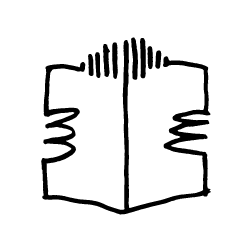Borderline Visible by Ant Hampton:
Collectively
- presented as a live event for audiences - each holding a book, guided by an immersive soundtrack from surrounding speakers, and occasionally plunged into darkness.
︎︎︎
For full info about Borderline Visible - content, concept, documentation - see here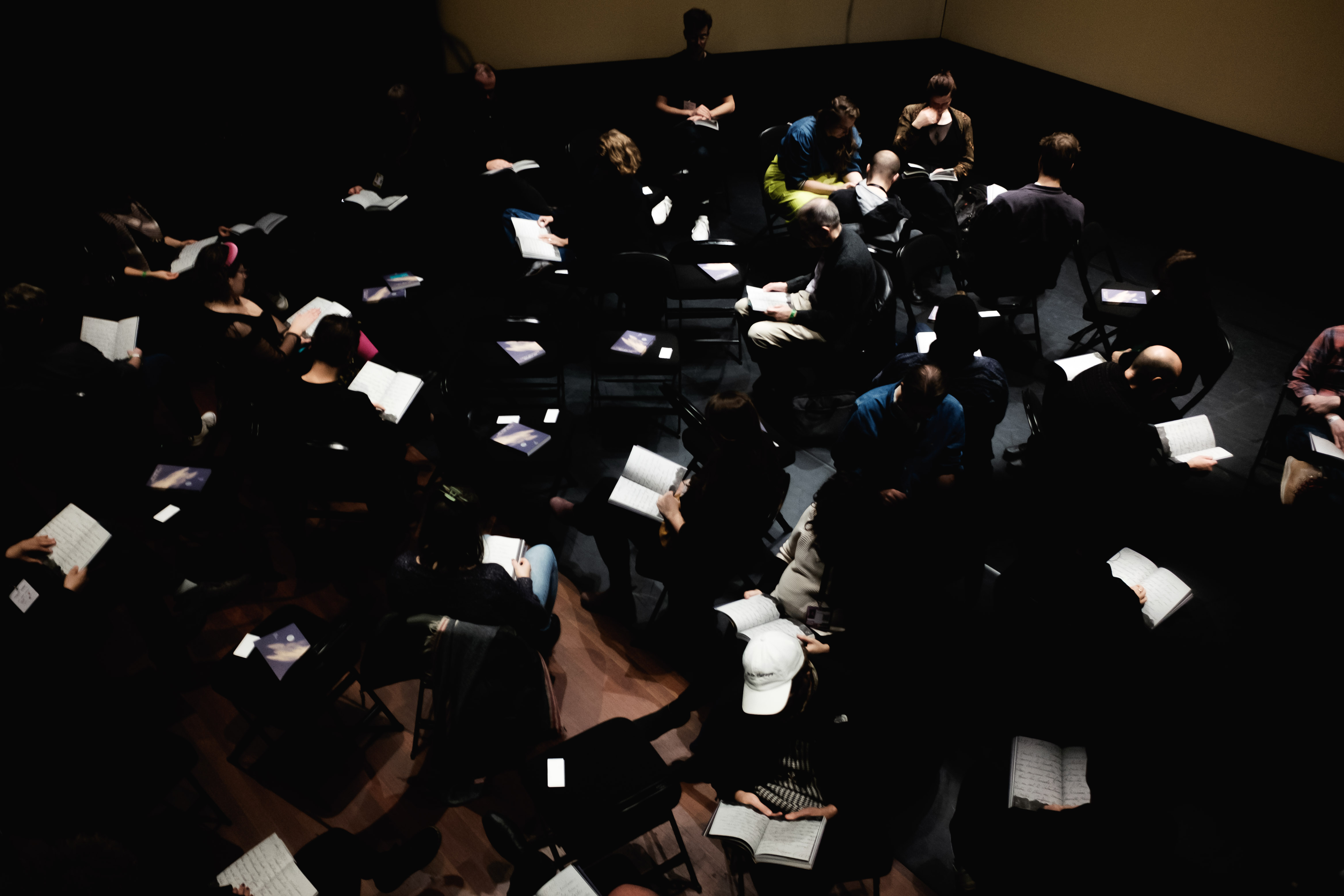



Time Based Editions’ ingenious new format offers ‘audio-visual’ as two separate elements, held together here in a shared, collective present through a physical synchronisation of our hands. Together we dive into a here-and-now of the page: printed photography brought alive by a soundscape that both guides and surrounds us.
“the beauty of the collective experience is that it does feel more like a live event, which increases the attention and urgency. In the theatre auditorium, Borderline Visible truly feels like a journey through space and time.” - Marijn Lems, for Theaterkrant
What’s the difference between experiencing it collectively and doing it alone?
Partly, it’s the same difference between seeing a movie at home and in a cinema with others. Especially when, as here, the material and story gets to a place where bearing witness collectively feels necessary.
But with Time Based Editions we are not simply watching a film.
We become aware of movement around us - a choreographed ‘echo’ of our own page-turning; fingers tracing lines together, a book being turned upside down in sync with others.
With this awareness our attention is brought away from image and representation and more to the book as a material object and our embodied relationship with it.
Sometimes the prompts to ‘close your eyes’ are not present in the collective version. Instead, the light may fade or disappear entirely leaving us momentarily holding our books in darkness as the sound continues.
In some setups it may be preferable to have audiences on synchronised headphones, but in general the awareness of listening to the same sound source (surrounding speakers) adds to a sense of collective involvement - which feels ever more poignant as the narration builds.
Contexts ︎︎︎
Images above from IDFA (International Documentary Festival Amsterdam) DocLab 2023, where Borderline Visible won the 2023 award for Creative Technologies.
![]()
The collective experience is being presented in diverse contexts: theatres (Vidy, Lausanne), museums and galleries (Kanal Centre Pompidou, Brussels / Kunsthall ExtraCity, Antwerp), film festivals, and coming up in 2024 - photography, journalism and music festivals...
Usually it’s additionally offered to audiences to experience alone, on headphones, within calm installations condusive to concentration. This also allows for access to the work in the other available languages. Photo shows the install within IDFA DocLab exhibition, click to enlarge:
![]()
It may also be sited in locations that resonate with the narration, or thematics (e.g. the National Theatre of Northern Greece presented the work in the former home of one of Thessaloniki’s important Jewish families).
Some practical info ︎︎︎
Venue and audience numbers - 40 recommended minimum; no maximum.
Books
- can be used multiple times over several presentations, and sold at a discount following the last performance.
- alternatively they can be included with the ticket price.
- they must be ordered at wholesale price (about 50% of retail price), sold at retail price: host organisation keeps profit
Either way, audiences should be able to go home with a copy if they wish. The book, a ‘charged’ trace of the time-based experience, allows for the multiple strands of the story to resonate and deepen long afterwards. There are also further pages to discover that are not touched on by the audio.
![]()
Audience all seated on seats that are positioned equidistant, and facing in different directions.
If in a theatre, it can be either on stage or ideally take up the whole space, with tribune pushed back.
In this photo from Vidy Lausanne there are 40 chairs. The tribune (green and yellow) was an existing installation. The speakers are behind, and above.
![]()
How we run it︎︎︎
The lights and sound run together, automatically, via MIDI cues from either an Ableton Live project, or a QLab project.
When this isn’t possible technically the cues can be launched manually from the lighting desk.
For a full tech rider, please contact us: info@timebasededitions.com
“the beauty of the collective experience is that it does feel more like a live event, which increases the attention and urgency. In the theatre auditorium, Borderline Visible truly feels like a journey through space and time.” - Marijn Lems, for Theaterkrant
What’s the difference between experiencing it collectively and doing it alone?
Partly, it’s the same difference between seeing a movie at home and in a cinema with others. Especially when, as here, the material and story gets to a place where bearing witness collectively feels necessary.
But with Time Based Editions we are not simply watching a film.
We become aware of movement around us - a choreographed ‘echo’ of our own page-turning; fingers tracing lines together, a book being turned upside down in sync with others.
With this awareness our attention is brought away from image and representation and more to the book as a material object and our embodied relationship with it.
Sometimes the prompts to ‘close your eyes’ are not present in the collective version. Instead, the light may fade or disappear entirely leaving us momentarily holding our books in darkness as the sound continues.
In some setups it may be preferable to have audiences on synchronised headphones, but in general the awareness of listening to the same sound source (surrounding speakers) adds to a sense of collective involvement - which feels ever more poignant as the narration builds.
Contexts ︎︎︎
Images above from IDFA (International Documentary Festival Amsterdam) DocLab 2023, where Borderline Visible won the 2023 award for Creative Technologies.
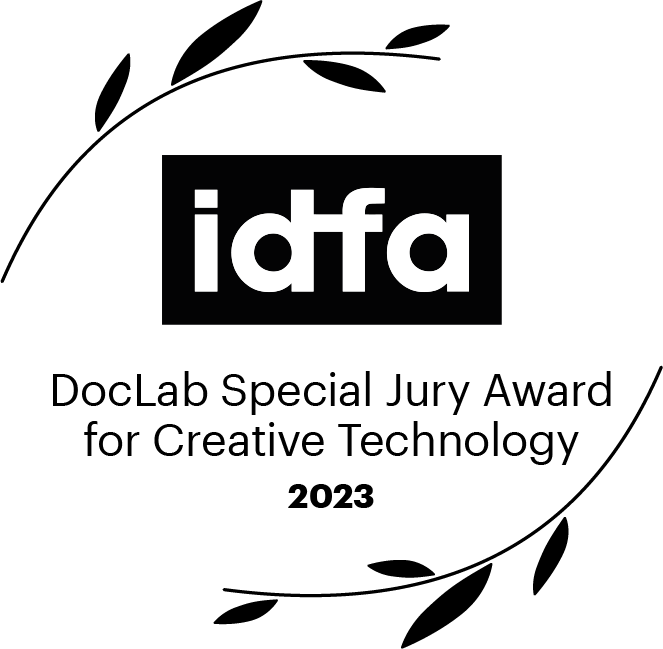
The collective experience is being presented in diverse contexts: theatres (Vidy, Lausanne), museums and galleries (Kanal Centre Pompidou, Brussels / Kunsthall ExtraCity, Antwerp), film festivals, and coming up in 2024 - photography, journalism and music festivals...
Usually it’s additionally offered to audiences to experience alone, on headphones, within calm installations condusive to concentration. This also allows for access to the work in the other available languages. Photo shows the install within IDFA DocLab exhibition, click to enlarge:
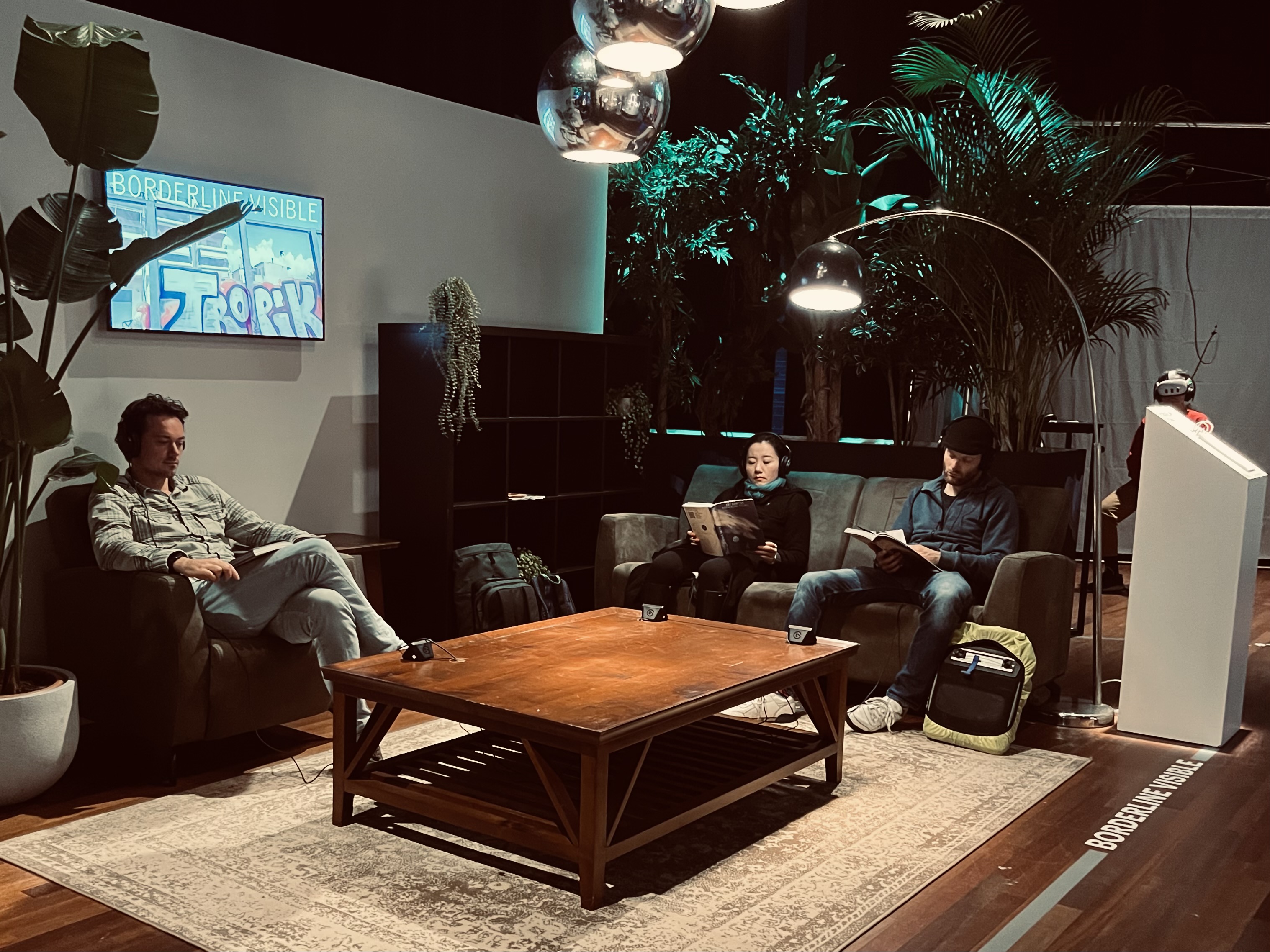
It may also be sited in locations that resonate with the narration, or thematics (e.g. the National Theatre of Northern Greece presented the work in the former home of one of Thessaloniki’s important Jewish families).
Some practical info ︎︎︎
Venue and audience numbers - 40 recommended minimum; no maximum.
Books
- can be used multiple times over several presentations, and sold at a discount following the last performance.
- alternatively they can be included with the ticket price.
- they must be ordered at wholesale price (about 50% of retail price), sold at retail price: host organisation keeps profit
Either way, audiences should be able to go home with a copy if they wish. The book, a ‘charged’ trace of the time-based experience, allows for the multiple strands of the story to resonate and deepen long afterwards. There are also further pages to discover that are not touched on by the audio.

Audience all seated on seats that are positioned equidistant, and facing in different directions.
If in a theatre, it can be either on stage or ideally take up the whole space, with tribune pushed back.
In this photo from Vidy Lausanne there are 40 chairs. The tribune (green and yellow) was an existing installation. The speakers are behind, and above.
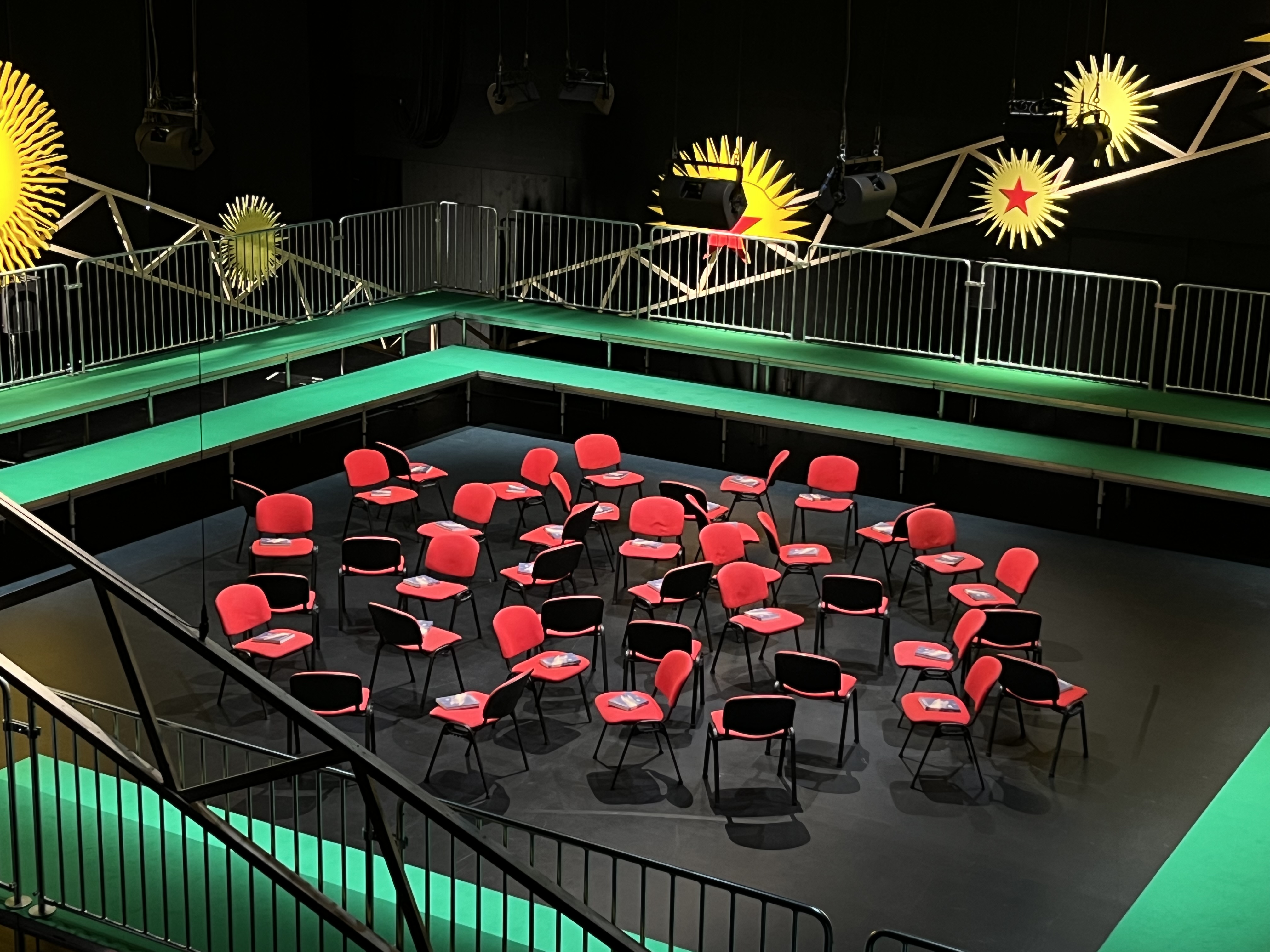
How we run it︎︎︎
The lights and sound run together, automatically, via MIDI cues from either an Ableton Live project, or a QLab project.
When this isn’t possible technically the cues can be launched manually from the lighting desk.
For a full tech rider, please contact us: info@timebasededitions.com
